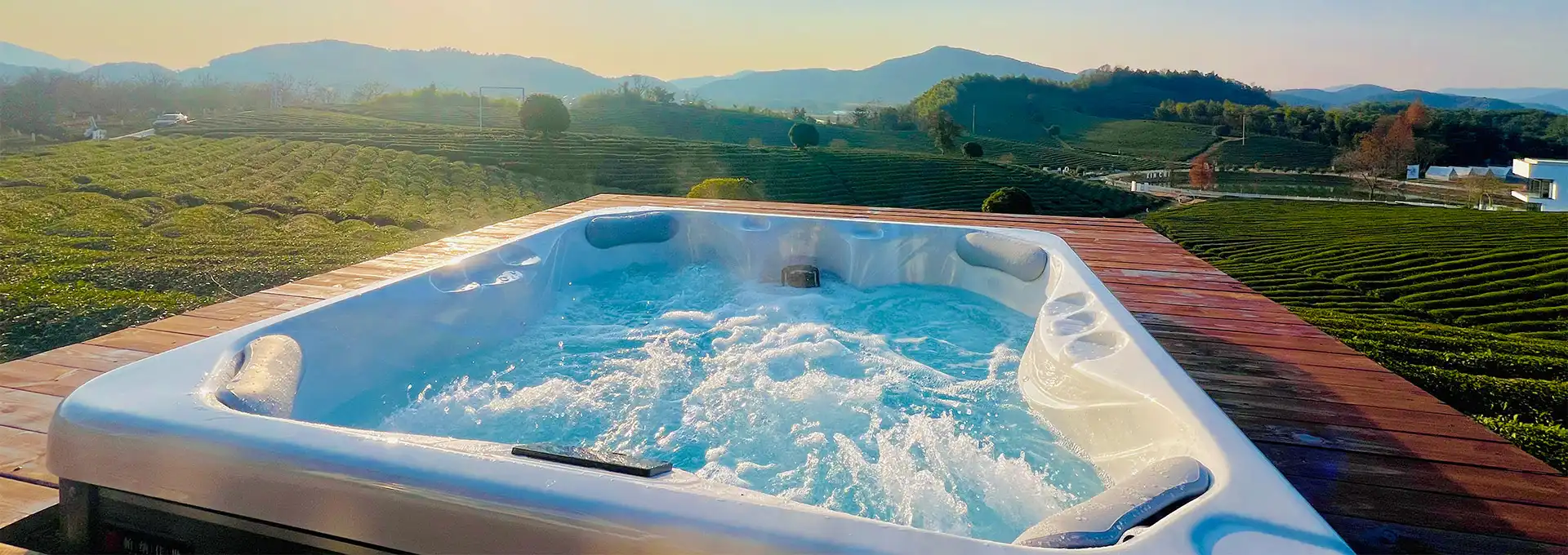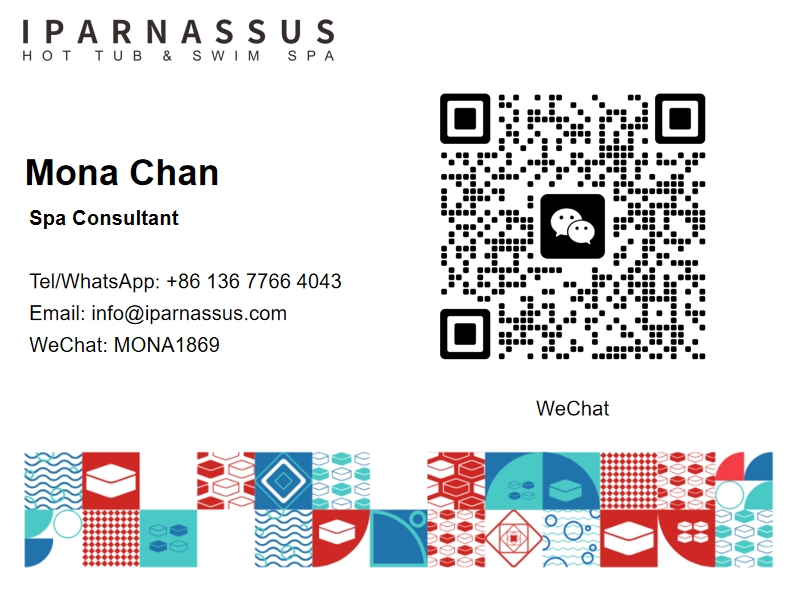How to Maintain a Hot Tub Efficiently?
2025-07-09 22:37:47
Proper hot tub maintenance is essential for ensuring optimal performance, water quality, and longevity of your investment. Efficient maintenance involves understanding the key components of your hot tub system and implementing a consistent care routine. Regular maintenance not only keeps your hot tub operating smoothly but also protects your health by maintaining clean, safe water conditions. This comprehensive guide will walk you through the essential aspects of hot tub maintenance, helping you develop effective strategies for keeping your spa in excellent condition year-round.
How Often Should You Clean Your Hot Tub?
Daily Maintenance Tasks
Daily hot tub maintenance involves simple yet crucial tasks that prevent major issues from developing. Start by checking the water temperature and ensuring it remains at your desired level, typically between 100-104°F. Remove any visible debris such as leaves, insects, or hair from the water surface using a skimmer net. Test the water chemistry daily using test strips or a digital tester to monitor pH levels, total alkalinity, and sanitizer levels. The pH should remain between 7.2-7.8 for optimal comfort and equipment protection. Check the hot tub cover for proper fit and cleanliness, as a well-maintained cover prevents debris accumulation and heat loss. These daily practices take only a few minutes but significantly reduce the need for extensive cleaning later.
Weekly Deep Cleaning
Weekly hot tub maintenance requires more thorough attention to ensure pristine water conditions. Clean the waterline with a specialized hot tub cleaner to remove oils, lotions, and soap residue that can create unsightly rings. Inspect and clean the hot tub filter thoroughly by removing it and rinsing with a garden hose, rotating the filter to reach all pleats. If heavily soiled, soak the filter in a filter cleaning solution overnight before rinsing. Check all jets for proper operation and clean them if necessary to maintain optimal water circulation. Balance the water chemistry by adding appropriate chemicals based on your test results, including sanitizer, pH adjusters, and alkalinity increasers as needed. This weekly routine ensures your hot tub remains hygienic and enjoyable for all users.
Monthly Comprehensive Maintenance
Monthly hot tub maintenance involves comprehensive tasks that address deeper system needs. Drain and refill your hot tub completely, as water should typically be replaced every 3-4 months depending on usage frequency. Clean the hot tub shell thoroughly with a non-abrasive cleaner, paying special attention to corners and crevices where bacteria might accumulate. Inspect the hot tub cover for wear, tears, or waterlogging, and clean it with appropriate cleaners to maintain its insulating properties. Check all electrical connections, pumps, and heating elements for proper operation and signs of wear. Rotate your filter cartridges if you have spares, allowing cleaned filters to dry completely before storage. This monthly maintenance schedule helps identify potential issues early and extends the life of your hot tub components.
What Chemicals Do You Need for Hot Tub Maintenance?
Essential Sanitizers
Proper hot tub sanitation requires effective sanitizers to eliminate harmful bacteria and maintain safe water conditions. Chlorine remains the most popular sanitizer choice, available in granular or tablet form, providing rapid bacterial elimination and easy monitoring. Bromine offers an alternative sanitizer that works effectively at higher temperatures and produces less odor than chlorine, making it ideal for hot tub environments. Both sanitizers should be maintained at proper levels: chlorine at 1-3 ppm and bromine at 3-5 ppm. Consider using mineral sanitizers as supplementary systems to reduce chemical usage while maintaining water quality. These systems use silver and copper ions to provide continuous sanitation, allowing you to reduce traditional sanitizer amounts while maintaining effective bacterial control.
pH and Alkalinity Balancers
Maintaining proper pH and alkalinity levels is crucial for hot tub water balance and equipment protection. pH increasers (sodium carbonate) raise acidic water to optimal levels, while pH decreasers (sodium bisulfate) lower alkaline water. Total alkalinity should be maintained between 80-120 ppm to buffer pH changes and prevent rapid fluctuations. Use alkalinity increasers (sodium bicarbonate) to raise levels when necessary. Calcium hardness should be maintained between 150-300 ppm to prevent equipment corrosion and scale formation. Water that is too soft can damage hot tub components, while water that is too hard creates scale buildup. Regular testing and adjustment of these parameters ensure optimal water conditions and protect your hot tub investment from chemical damage.
Shock Treatments and Specialty Chemicals
Hot tub shock treatments are essential for eliminating organic contaminants and maintaining crystal-clear water. Non-chlorine shock (potassium monopersulfate) oxidizes organic waste without affecting sanitizer levels, making it ideal for regular use. Chlorine shock provides both oxidation and sanitization, perfect for heavy bather loads or when dealing with algae issues. Use enzyme treatments monthly to break down oils, lotions, and organic matter that regular sanitizers cannot eliminate. Clarifiers help remove small particles that make water appear cloudy, while defoamers eliminate foam caused by soap residue and body oils. Scale and stain preventers protect hot tub surfaces and equipment from mineral buildup, particularly important in areas with hard water. These specialty chemicals enhance your basic maintenance routine and address specific water quality issues.
How Do You Replace Hot Tub Filters?
Filter Inspection and Assessment
Regular hot tub filter inspection is crucial for maintaining optimal water circulation and quality. Remove filters weekly to examine their condition, looking for signs of wear, tears, or excessive buildup that cannot be cleaned effectively. Check the filter pleats for proper spacing and structural integrity, as damaged pleats reduce filtration efficiency. Inspect the filter caps and threading for cracks or damage that could allow unfiltered water to bypass the system. Note the filter's color and texture, as heavily discolored or hardened filters indicate the need for replacement. Keep a maintenance log to track filter cleaning frequency and replacement dates, helping you identify patterns and optimize your maintenance schedule. Proper inspection prevents filtration problems before they affect water quality or equipment performance.
Step-by-Step Replacement Process
Replacing hot tub filters requires careful attention to ensure proper installation and system function. Turn off the hot tub power and allow the system to cool before beginning filter replacement. Remove the filter housing cover, typically located near the hot tub's edge, and carefully lift out the old filter. Clean the filter housing with a soft brush and mild cleaner to remove any debris or buildup. Install the new filter by aligning it properly with the housing and ensuring it seats completely. Replace the housing cover securely, checking that all seals are properly positioned. Restart the hot tub system and monitor initial operation to ensure proper water flow and circulation. Prime the system if necessary by running pumps at high speed for several minutes to eliminate air bubbles.
Filter Maintenance Best Practices
Effective hot tub filter maintenance extends filter life and ensures optimal performance. Rotate between multiple filter sets to allow thorough cleaning and drying between uses. Clean filters with specialized filter cleaners rather than household detergents, which can leave residues that affect water chemistry. Use a filter cleaning wand or brush to reach deep into pleats and remove stubborn debris. Soak heavily soiled filters in filter cleaning solutions overnight before rinsing thoroughly. Store clean, dry filters in a ventilated area to prevent mold and mildew growth. Replace filters according to manufacturer recommendations, typically every 12-18 months depending on usage and water conditions. Quality filters may cost more initially but provide better filtration and longer service life, making them more economical over time.
Conclusion
Efficient hot tub maintenance requires consistent attention to water chemistry, regular cleaning, and proper equipment care. By following daily, weekly, and monthly maintenance routines, you can ensure optimal performance and extend your hot tub's lifespan. Understanding essential chemicals and filter replacement procedures helps maintain safe, clean water conditions. These practices protect your investment while ensuring endless enjoyment of your hot tub experience.
Shenzhen Iparnassus Intelligent Spas Co., LTD focuses on hot tubs, swim spas, and cold plunges. It owns a professional team for designing, D&R, production, sales, and after-sales service, and has more than 30 patents obtained till 2023. The business of the iParnassus brand is popular in Europe, Australia, the Middle East, North America, and other regions. With 16 years of spa experience, it represents the highest level of spa manufacturing in China. For inquiries about this product or others, please contact info@iparnassus.com for dedicated service.
References
1. Pool & Hot Tub Alliance. (2021). Residential hot tub maintenance standards and best practices. Hot Tub Technology Quarterly, 18(3), 45-62.
2. Water Quality Association. (2020). Chemical balance and sanitization in recreational water systems. Journal of Water Treatment, 33(7), 234-251.
3. American Society of Pool Professionals. (2019). Filter maintenance and replacement guidelines for spa systems. Pool & Spa Maintenance Review, 25(4), 112-128.
4. National Swimming Pool Foundation. (2022). Water chemistry fundamentals for hot tub operators. Aquatic Facility Management, 14(2), 78-94.
5. International Association of Plumbing Engineers. (2020). Equipment maintenance protocols for residential spa systems. Plumbing Systems & Design, 41(8), 156-173.
6. Hot Tub Manufacturers Association. (2021). Comprehensive guide to spa maintenance and longevity. Spa Industry Technical Journal, 29(6), 201-218.



